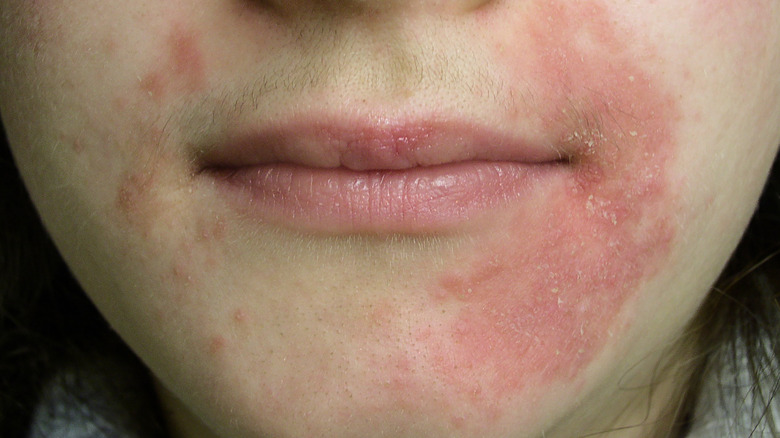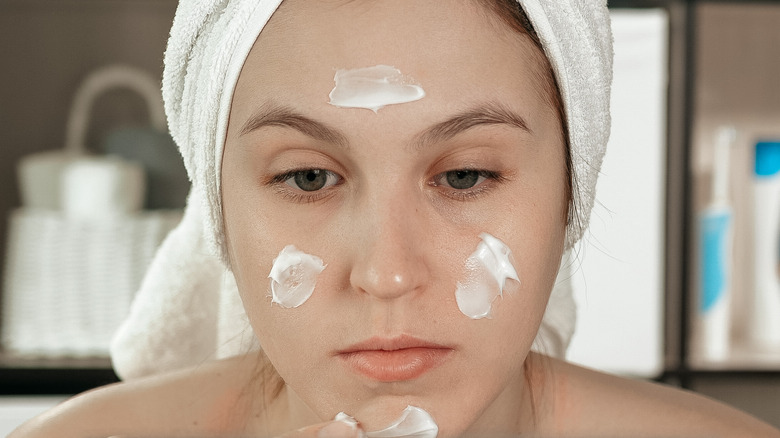What Is Perioral Dermatitis And Where Does It Come From?
Perioral dermatitis is skin inflammation around the mouth that looks like a flaky rash. It is often mistaken for acne because inflamed bumps, called papules, are usually present. In some cases, it can cover areas around the nose and on the eyelids. For some people, the rash can itch and burn, and in severe cases, the inflamed area may bleed and become infected.
There are two types of perioral dermatitis. The most common form of the rash is referred to as typical. The less common type of rash is granulomatous, which includes yellow bumps in the rash as opposed to red ones seen with typical perioral dermatitis.
Women between the ages of 25 and 45 are more prone to developing the rash, but children and men have been known to have it as well. People with allergies also seem to be more susceptible to perioral dermatitis. Interestingly, children are more likely to experience granulomatous dermatitis (via Cleveland Clinic).
What causes perioral dermatitis?
The cause of perioral dermatitis is undetermined, but topical steroid creams might be the culprit in many cases. Other possible causes include heavy face creams, fluoride, dental fillings, and even chewing gum. Additional triggers could be hormonal changes, problems with the immune system or epidermal barrier, bacteria, candida albicans, and demodex mites.
Having no definite cause for the condition makes it more difficult to treat. However, the American Osteopathic College of Dermatology suggests stopping any use of topical steroid creams as a first step (after consulting with a doctor).
Topical and immunosuppressant creams are often prescribed to treat the condition as well as acne medication. For severe cases, doctors may also prescribe oral antibiotics.
Eliminating harsh face cleansers or scrubs is also recommended. Women should cut or reduce the amount of makeup they use to see if they notice a difference. Cutting down on spicy and salty foods might help reduce irritations around the mouth. Washing towels and pillowcases in hot water often kills any germs that might contribute to inflammation.


